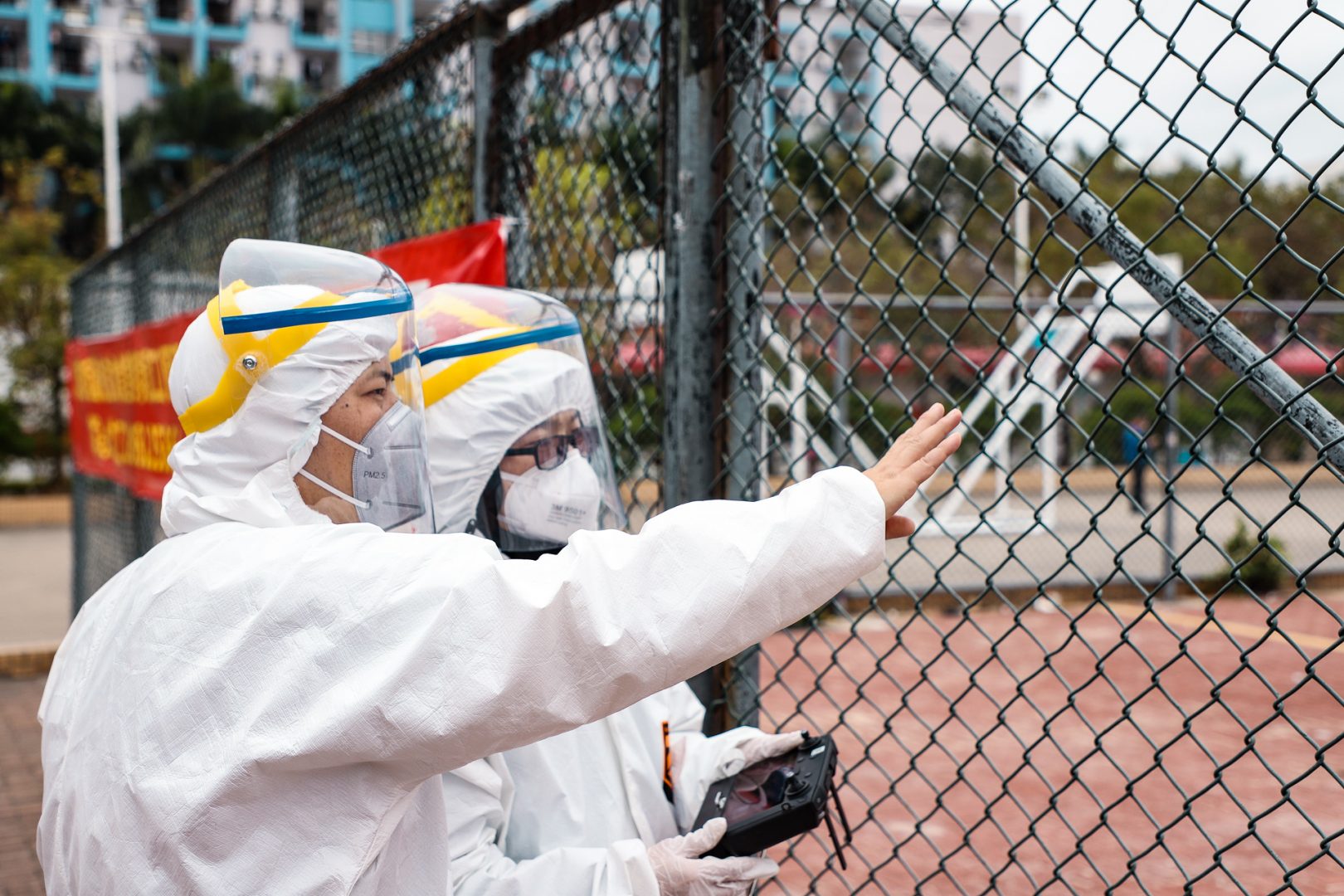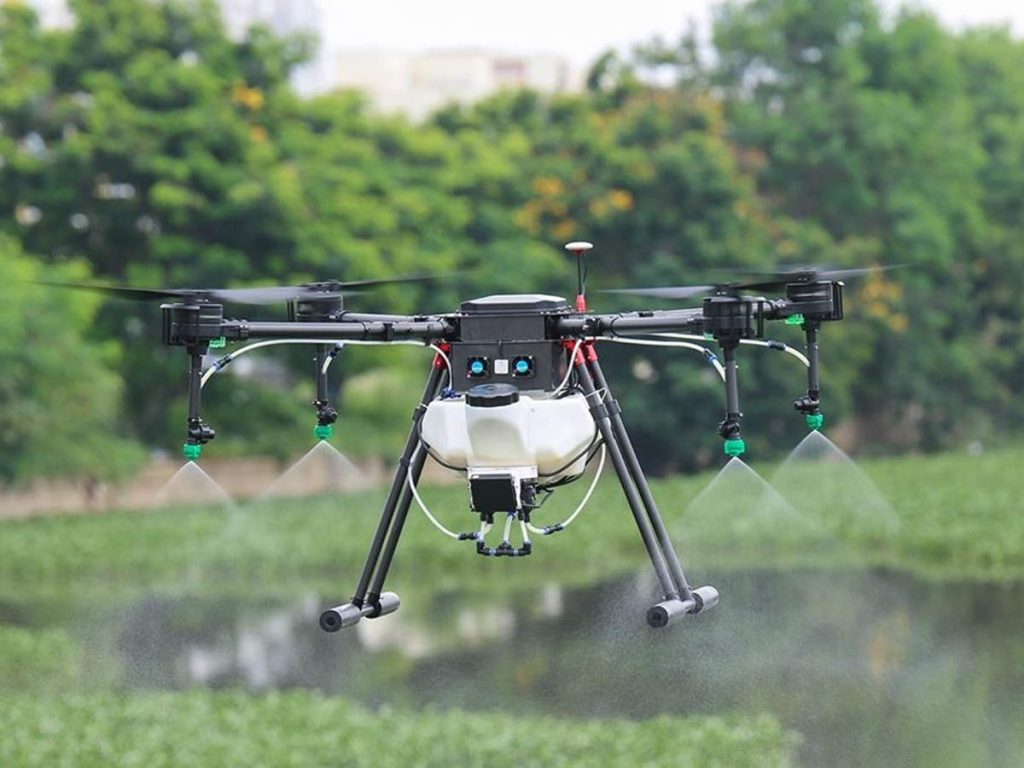From the initially reported outbreak of coronavirus (COVID-19) in China to the spread of it across the globe, Medtech companies are rolling out robots and drones to help fight it and provide services and care to those quarantined or practicing social distancing. This pandemic has fast-tracked the testing of drones in public as officials seek out the most expedient and safe way to grapple with the outbreak and limit contamination and spread of the virus.
Nations across the world have imposed quarantines in an attempt to control the spread of the novel coronavirus (COVID-19). Some of these countries have utilised drones to help reinforce the message that people need to stay home. China, France, Italy, Kuwait, Spain and United Arab Emirates, all have deployed drones equipped with loudspeakers have been telling roaming citizens to go back to their homes.
1. Dispersing Public Gatherings
Police Departments in all parts of the world are using drones to enforce lockdowns and monitor social distancing of citizens in their cities.
Here’s a video from the City of Taizhou showcasing how a drone flies above the community and warns people to protect themselves against the novel coronavirus outbreak.
2. Medical Drone Delivery
Drone delivery has obvious benefits in a time like this, when both expediency and minimal human contact are incredibly important.
In the actual transportation process, using drones has increased the efficiency time by more than 50% compared to ordinary road transportation, proving to be a more efficient means of transportation for epidemic prevention and control. At the same time, with more and more medical staff and ambulance being transferred to the front line, in the case of extreme personnel shortage, the use of drone transportation can also save human and material resources to the greatest extent. In addition, using a drone to transport materials can effectively avoid secondary pollution of medical materials.

Terra Drone group company Antwork has transported medical samples and quarantine materials between Xinchang County People’s Hospital, Xinchang County disease control center and Dashiju branch of Xinchang County People’s Hospital
3. Disinfecting Public Spaces with Drones
Source : https://content.dji.com/dji-helps-fight-coronavirus-with-drones
Together with agricultural technology think tanks, DJI has been working to fight the disease. On February 4, DJI pledged almost US $1.5 million in aid to help contain the outbreak. We have also adapted our Agras series of agricultural spraying drones to spray disinfectant in potentially affected areas. Drones can dramatically improve how China attempts to kill the virus in public areas: They can cover far more ground than traditional methods, while reducing risk to workers who would otherwise spend more time potentially exposed to both the virus and the disinfectant.

After rounds of research and testing, teams developed best practices for spraying a chlorine or ethyl alcohol-based disinfectant from the air. The concentration of the solution as well as flight guidelines can be modified for different circumstances, such as whether an area is known to be infected or not.
DJI has sprayed disinfectant in over 3 million square meters in Shenzhen. The company is also helping 1,000 counties in China to adopt the spraying method. Target areas include factories, residential areas, hospitals, and waste treatment plants. In total, this covers 600 million square meters across the country so far. With this solution, spraying efficiency can be 50 times faster than traditional methods. In a crisis where time plays a critical role, this is great news.
“Assisting on the containment of a disease, while ensuring safety to personnel, was very difficult to do in the past,” said Romeo Durscher, Senior Director of Public Safety Integration at DJI. “This was a complete grassroots movement. Users inspired us to take action, and it was worth the effort. It embodies the DJI spirit, where anyone with the access to these new tools can help improve their environment and help society.”
4. Temperature Check
As the entire country of China has implemented measures to limit the spread of COVID-19, most apartment complexes and other buildings have implemented a simple temperature check process before admitting visitors into the building. This has proven to be a simple, yet effective measure to screen for potentially infected persons as a key symptom of the virus is a high fever.
While the process has proven effective overall, it has one risk point – the personnel conducting the temperature checks. As they traditionally measure each person with a handheld infrared thermometer, they may come into close contact with the virus and become a spreader themselves.
To limit this one risk point, some teams are using drones equipped with infrared cameras to test temperature measurements. While these drones are commonly used for public safety operations or inspections, with proper calibration, these drones can instead help measure body temperature.
After DJI’s engineering team tested different ways to calibrate airborne infrared cameras to measure body temperature, results showed that by installing a cotton swab within the field of view of the thermal camera, the camera can get an accurate reading. The calibrated drone camera can then be used to measure body temperatures while the officer remains at a safe distance away. While the results are encouraging, it is essential to mention this solution is not designed to be used for standard medical procedures, and to get usable data, the calibration process must follow the procedure strictly.
Have ideas on how drones can help prevent the spread of COVID-19 ? Share it with us in the comments section.



About The Author: Deep Kanakia
More posts by Deep Kanakia